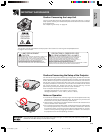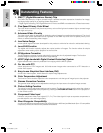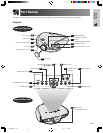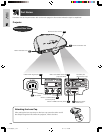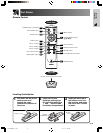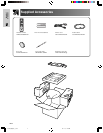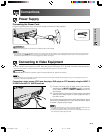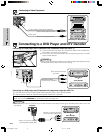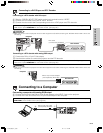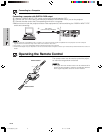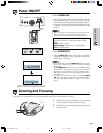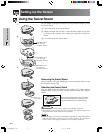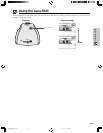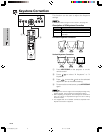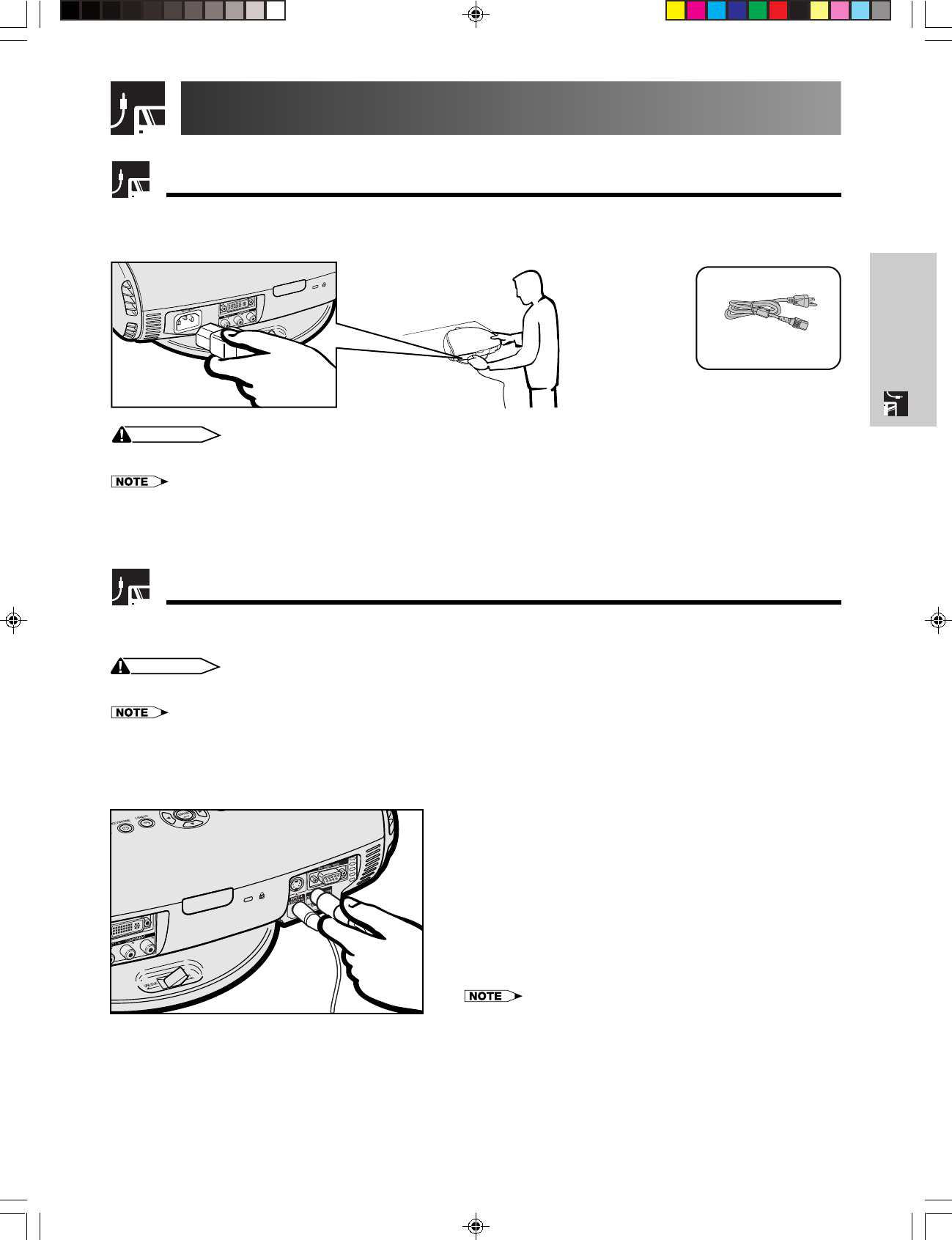
E-12
Setup & Connections
Power Supply
Connecting the Power Cord
Plug the supplied power cord into the AC socket on the back of the projector.
Connections
Power cord
CAUTION
• Make sure the power cord is firmly connected into the AC socket.
• The projector will enter the standby mode as you re-plug it into the AC socket, when unplugging the power cord after turning the power
off by pressing the POWER button. However, if the projector was turned off by disconnecting the power cord or by a power failure, the
projector will automatically turn on when plugging the power cord again.
1 Connect one end of the S-video cable (commercially
available) to the INPUT 3 S-VIDEO terminal, or one end
of the video cable to the INPUT 4 VIDEO terminal on
the projector.
2 Connect the other end of the S-video cable or the video
cable to the S-video output or Video output terminal of
the video source.
The S-video input terminal uses a video signal system where
the picture is separated into a color and luminance signal
to realize a higher-quality image.
• For higher quality video, you may use the S-video input terminal on the
projector. An S-video cable is commercially available.
• If your video equipment does not have an S-video output terminal, use
the composite video output terminal.
Connecting to Video Equipment
Connecting a video source (VCR, laser disc player, DVD player or DTV decoder) using the INPUT 3
S-VIDEO and INPUT 4 VIDEO terminals
You can connect your projector to a VCR, laser disc player, DVD player, DTV* decoder and other video equipment.
* DTV is the umbrella term used to describe the new digital television system in the United States.
CAUTION
• Make sure to turn both the projector and the video equipment off, before connecting.
• As this projector is not equipped with audio input terminals, commercially available audio equipment or your own equipment (such as
speakers or amplifiers) should be used.
DT-200(E)#p12_14.p65 02.11.21, 11:29 AM12



